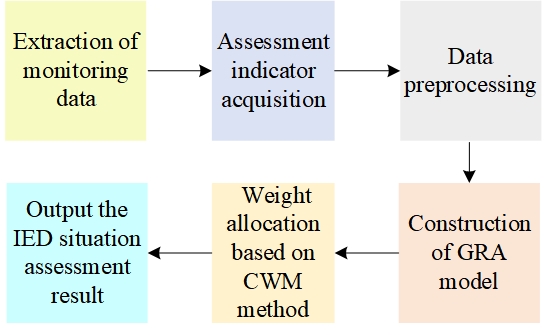 Open Access
Open Access
ARTICLE
Fortifying Smart Grids: A Holistic Assessment Strategy against Cyber Attacks and Physical Threats for Intelligent Electronic Devices
1 School of Computer Science, Zhengzhou University of Aeronautics, Zhengzhou, 450046, China
2 Henan Xin'an Century Technology Co., Ltd., Henan Data Security Engineering Technology Research Center, Zhengzhou, 450046, China
3 Key Laboratory of Aerospace Information Security and Trusted Computing, Ministry of Education, School of Cyber Science and Engineering, Wuhan University, Wuhan, 430072, China
* Corresponding Author: June Li. Email:
(This article belongs to the Special Issue: Best Practices for Smart Grid SCADA Security Systems Using Artificial Intelligence (AI) Models)
Computers, Materials & Continua 2024, 80(2), 2579-2609. https://doi.org/10.32604/cmc.2024.053230
Received 28 April 2024; Accepted 08 July 2024; Issue published 15 August 2024
Abstract
Intelligent electronic devices (IEDs) are interconnected via communication networks and play pivotal roles in transmitting grid-related operational data and executing control instructions. In the context of the heightened security challenges within smart grids, IEDs pose significant risks due to inherent hardware and software vulnerabilities, as well as the openness and vulnerability of communication protocols. Smart grid security, distinct from traditional internet security, mainly relies on monitoring network security events at the platform layer, lacking an effective assessment mechanism for IEDs. Hence, we incorporate considerations for both cyber-attacks and physical faults, presenting security assessment indicators and methods specifically tailored for IEDs. Initially, we outline the security monitoring technology for IEDs, considering the necessary data sources for their security assessment. Subsequently, we classify IEDs and establish a comprehensive security monitoring index system, incorporating factors such as running states, network traffic, and abnormal behaviors. This index system contains 18 indicators in 3 categories. Additionally, we elucidate quantitative methods for various indicators and propose a hybrid security assessment method known as GRCW-hybrid, combining grey relational analysis (GRA), analytic hierarchy process (AHP), and entropy weight method (EWM). According to the proposed assessment method, the security risk level of IEDs can be graded into 6 levels, namely 0, 1, 2, 3, 4, and 5. The higher the level, the greater the security risk. Finally, we assess and simulate 15 scenarios in 3 categories, which are based on monitoring indicators and real-world situations encountered by IEDs. The results show that calculated security risk level based on the proposed assessment method are consistent with actual simulation. Thus, the reasonableness and effectiveness of the proposed index system and assessment method are validated.Graphic Abstract

Keywords
Cite This Article
 Copyright © 2024 The Author(s). Published by Tech Science Press.
Copyright © 2024 The Author(s). Published by Tech Science Press.This work is licensed under a Creative Commons Attribution 4.0 International License , which permits unrestricted use, distribution, and reproduction in any medium, provided the original work is properly cited.


 Submit a Paper
Submit a Paper Propose a Special lssue
Propose a Special lssue View Full Text
View Full Text Download PDF
Download PDF Downloads
Downloads
 Citation Tools
Citation Tools